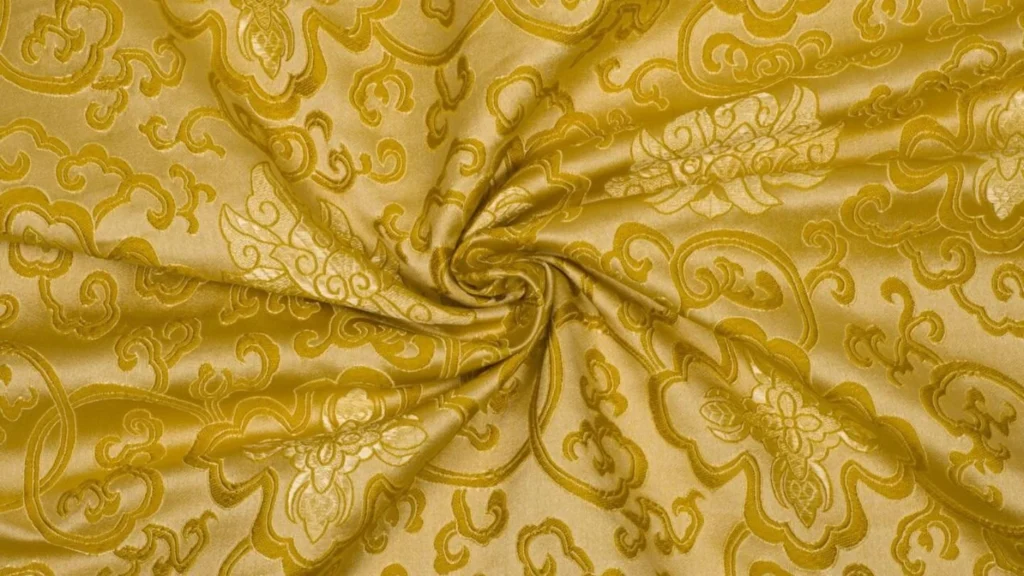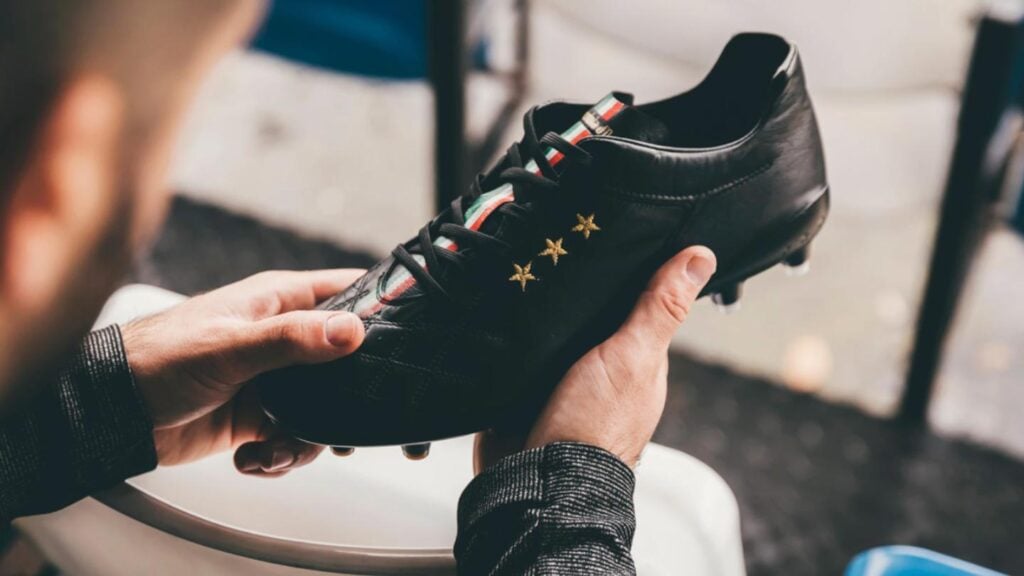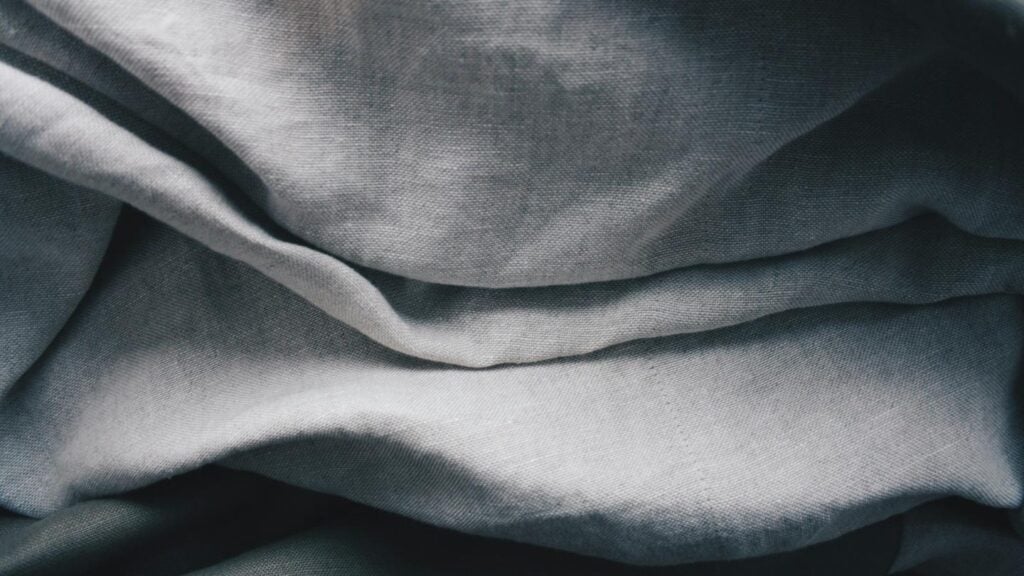2 – Jacquard Fabric Composition
3 – Jacquard Fabric vs Other Fabrics
4 – How Jacquard Fabric Is Manufactured
5 – Common Uses in Fashion
6 – Understanding the Environmental Impact of Jacquard Fabric
7 – Exploring Price Points and Value for Money
8 – Conclusion
9 – FAQs
What is Jacquard Fabric?
Jacquard fabric is a type of woven fabric that is recognized for its intricate patterns and textures. Unlike standard fabrics, where patterns are usually printed on the surface, Jacquard fabric incorporates the patterns directly into the weave itself. This means that the designs are integral to the fabric, rather than being just an outer layer, giving it a luxurious, high-quality appearance and texture.
The Jacquard weaving technique was invented by Joseph Marie Jacquard in the early 19th century. His invention of the Jacquard loom revolutionized fabric production by allowing automatic control of complex woven patterns. This innovation made it possible to create intricate designs and patterns in fabric without the need for manual intervention, paving the way for the sophisticated textiles we use today.
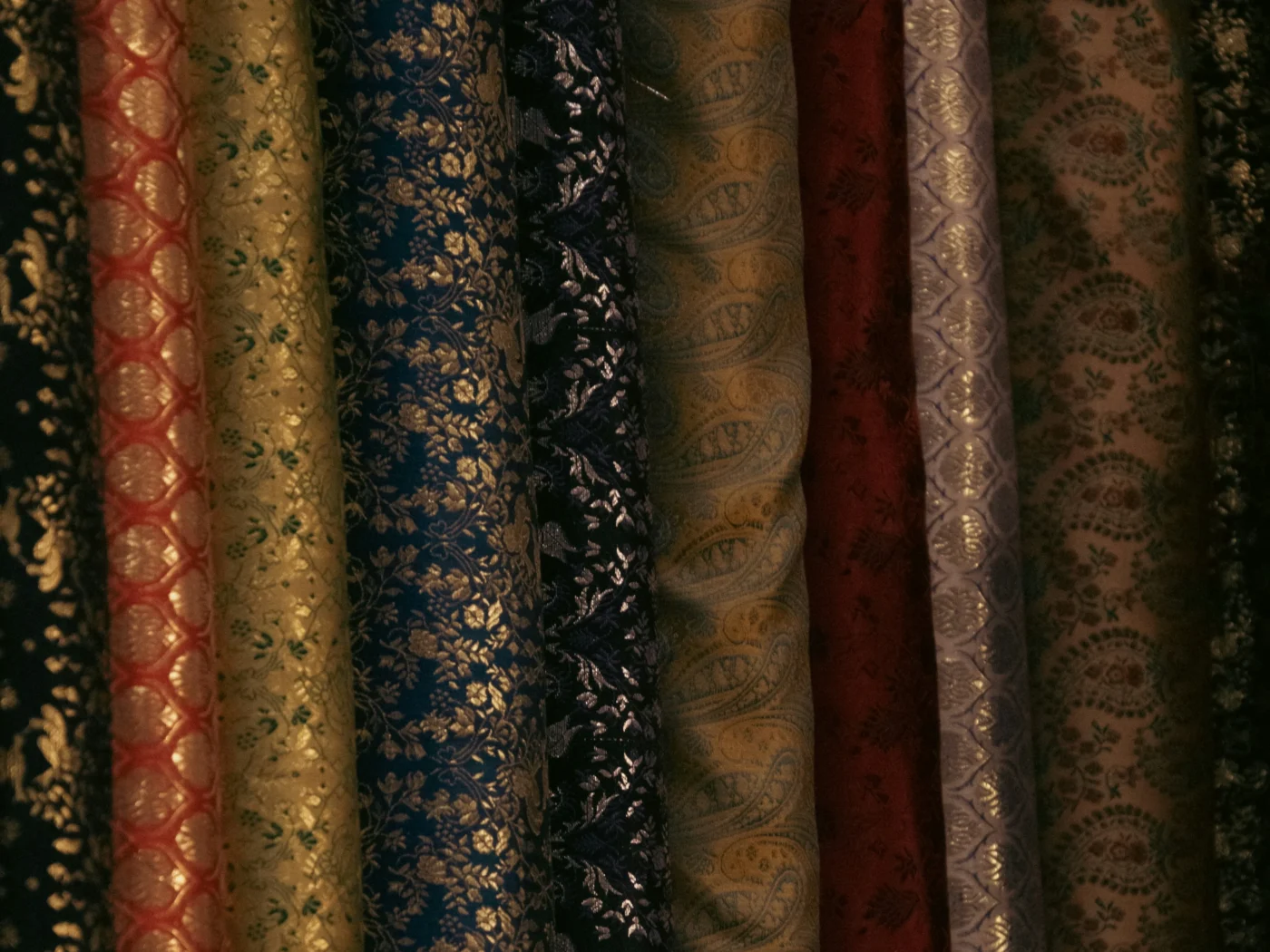
Key Features of Jacquard Fabric:
- Intricate Patterns: The defining feature of Jacquard fabric is its ability to create complex, multi-layered patterns such as florals, damasks, or brocades.
- Durability: Jacquard fabrics are often heavier and more durable than plain woven fabrics, as they are made with multiple threads woven together to form patterns.
- Versatility: It can be made from a variety of fibers, including cotton, silk, and synthetic fibers, allowing for a wide range of uses from luxury garments to upholstery.
Jacquard fabric has been a symbol of luxury and elegance since its inception, often seen in high-end fashion, home decor, and upholstery. Its versatility allows it to adapt to modern design trends while retaining its classic appeal. In the following sections, we will dive deeper into the origin, composition, and properties of Jacquard fabric, exploring what makes it a unique and valuable textile in the world of fashion and design.
Jacquard Fabric Composition
The composition of Jacquard fabric plays a significant role in its luxurious appearance, texture, and durability. Jacquard fabric can be made from various fibers, including natural fibers like cotton, silk, and wool, as well as synthetic fibers like polyester and nylon. The choice of fiber affects the fabric’s texture, strength, and appearance, making it a versatile material suited for a wide range of applications.
Key Components of Jacquard Fabric:
- Natural Fibers
- Cotton: Cotton Jacquard is soft, breathable, and ideal for home textiles and casual wear. It is often used for making upholstery, curtains, and dresses.
- Silk: Silk Jacquard offers a luxurious feel and is commonly used in high-end fashion for creating elegant garments such as evening dresses or luxury upholstery. The natural sheen of silk adds an additional layer of opulence to the fabric’s intricate patterns.
- Wool: Wool Jacquard is thicker and offers insulation, making it perfect for colder weather. It’s often used in suits, coats, and blankets.
- Synthetic Fibers
- Polyester: Polyester Jacquard is more affordable and durable. It’s often used in home decor and mass-market fashion. While not as luxurious as natural fibers, polyester Jacquard maintains its shape and pattern well and is resistant to wear and tear.
- Nylon: Nylon Jacquard is often used for performance wear or sports fabrics, as it is lightweight and resistant to abrasion while still allowing intricate patterns to be woven into the fabric.
- Blends
Many Jacquard fabrics use a blend of fibers to achieve a balance of softness, durability, and cost-effectiveness. For example, a cotton-silk blend offers both the breathability of cotton and the luxurious feel of silk, making it a popular choice for luxury garments.
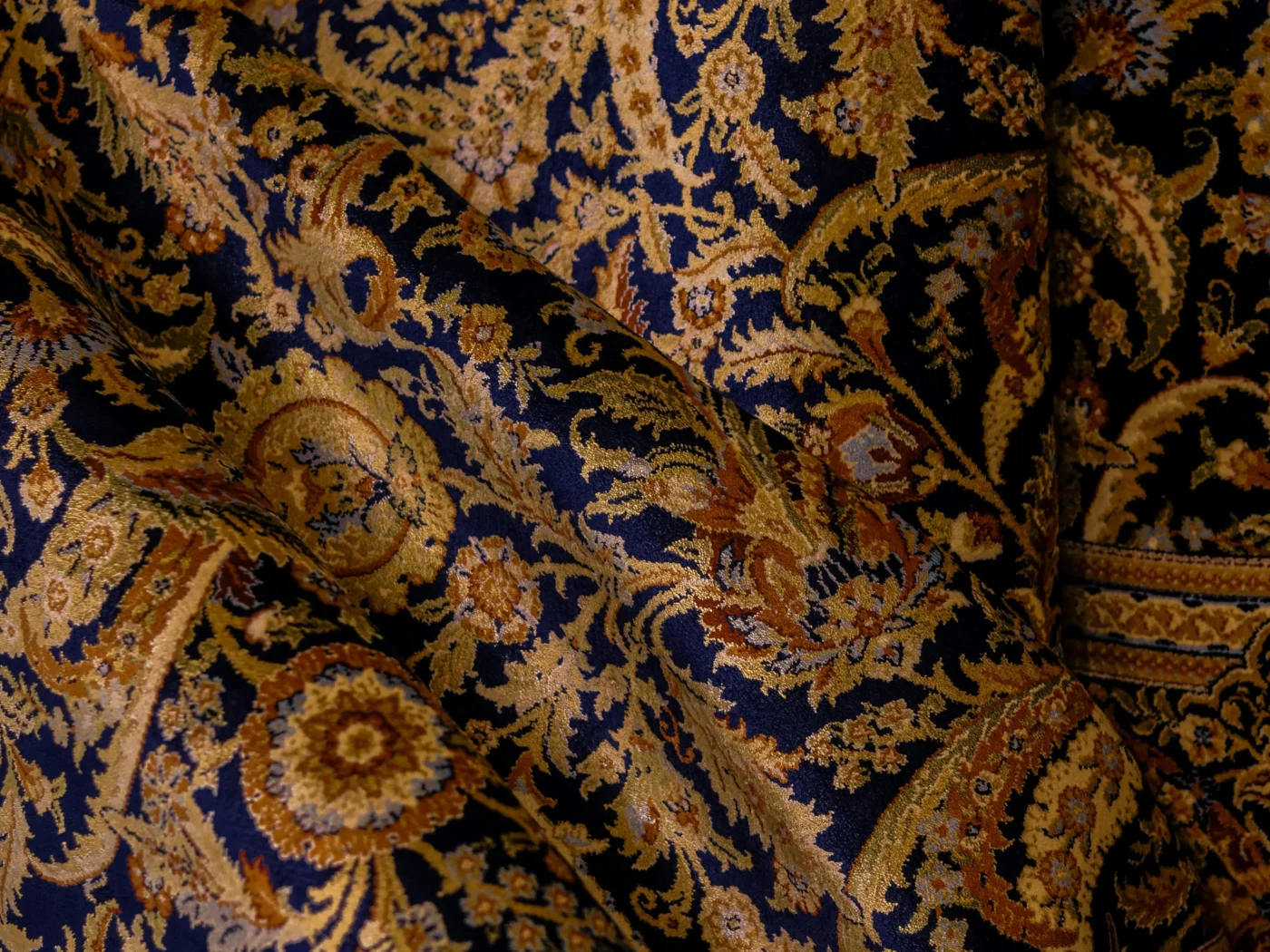
How Composition Affects Performance:
- Softness: Silk and cotton fibers give Jacquard fabric a smooth, soft feel, ideal for wearing directly on the skin.
- Durability: Synthetic fibers like polyester and nylon make Jacquard fabric more durable and resistant to wear and fading, making them a popular choice for home textiles and affordable fashion.
- Breathability: Natural fibers like cotton and wool provide breathability and comfort, while synthetic fibers offer moisture-wicking properties, making the fabric suitable for a range of environments.
The combination of different fibers in Jacquard fabric gives designers the flexibility to create fabrics with specific qualities, such as softness, strength, or luxurious sheen, to suit different needs in fashion and interior design.
Jacquard Fabric vs Other Fabrics
Jacquard fabric is often compared to other luxurious fabrics like brocade, velvet, and satin due to its intricate designs and premium appearance. However, its unique weaving technique and composition set it apart in terms of texture, durability, and functionality.
Jacquard Fabric vs Brocade
- Brocade: Brocade is a type of fabric that features intricate, raised patterns, often made from silk or synthetic fibers. Like Jacquard, it’s used for formal wear and upholstery. However, brocade typically has more 3D texture due to the raised motifs.
- Jacquard Fabric: Jacquard fabric is also woven with intricate patterns but has a more flat finish with complex designs woven directly into the fabric. Unlike brocade, Jacquard patterns are usually not raised but are embedded into the structure.
- Key Difference: Brocade tends to have a more textured, ornamental look, while Jacquard fabric is known for its versatility and refined, flat designs.
Jacquard Fabric vs Velvet
- Velvet: Velvet is a soft, plush fabric typically made from silk, cotton, or synthetic fibers. It has a distinct pile texture, which gives it a luxurious feel and appearance. Velvet is often used in eveningwear, luxury garments, and upholstery.
- Jacquard Fabric: While Jacquard fabric can be made with a variety of fibers, it lacks the soft, plush texture of velvet. Instead, Jacquard fabric’s patterns are woven directly into the fabric, giving it a firmer feel and a sleek finish.
- Key Difference: Velvet offers a softer, more tactile feel, while Jacquard has a more structured, elegant finish that is ideal for intricate patterns.
Jacquard Fabric vs Satin
- Satin: Satin is a fabric with a shiny surface created through a specific weaving technique that emphasizes the smoothness of the fibers, often made from silk, polyester, or nylon. It’s widely used for formal wear, bridal gowns, and evening dresses.
- Jacquard Fabric: While Satin offers a high gloss finish, Jacquard fabric features more intricate woven designs with less sheen, as it focuses more on the pattern and texture. Satin may be used for its shine, but Jacquard provides both aesthetic appeal and visual complexity through its woven patterns.
- Key Difference: Satin focuses on its shiny, smooth finish, while Jacquard adds a layer of depth and design complexity with its woven patterns.

How Jacquard Fabric Is Manufactured
The creation of Jacquard fabric involves a specialized weaving technique that enables intricate patterns and designs to be woven directly into the fabric, rather than being printed on the surface. This technique, which uses the Jacquard loom, revolutionized textile production in the 19th century, allowing for more complex and detailed designs than were possible with traditional looms.
Key Steps in Manufacturing Jacquard Fabric:
- Designing the Pattern
The first step in manufacturing Jacquard fabric is designing the pattern. Designers create detailed motifs or intricate patterns that will be woven into the fabric. These designs can range from simple geometric shapes to elaborate florals, damasks, or brocades. - Setting Up the Jacquard Loom
The Jacquard loom, invented by Joseph Marie Jacquard in 1804, is capable of controlling each thread in the weaving process independently. This allows for the creation of complex patterns without the need for hand-manipulation. Each thread is attached to a series of hooks and punch cards that dictate whether the thread will be raised or lowered during the weaving process. - Weaving the Fabric
Once the loom is set up, the weaving process begins. The warp threads (vertical threads) are drawn through the loom, while the weft threads (horizontal threads) are woven over and under the warp threads according to the design. The Jacquard loom automatically adjusts the position of each thread, creating the intricate patterns embedded directly into the fabric. - Finishing Treatments
After the fabric is woven, it undergoes finishing treatments such as dyeing, softening, and pressing. Dyeing can add color to the fabric and enhance the vibrancy of the woven patterns. Softening treatments make the fabric more comfortable to wear, while pressing ensures the fabric holds its shape. - Quality Control
The final step involves thorough quality control to ensure that the patterns are evenly woven, the fabric is durable, and there are no defects. Jacquard fabric is often tested for color fastness, texture consistency, and overall strength before it is ready for use in fashion or upholstery.

Benefits of the Jacquard Weaving Process:
- Complex Patterns: The Jacquard loom allows for the creation of highly detailed and intricate patterns that cannot be achieved with traditional weaving techniques.
- Durability: Because the patterns are woven directly into the fabric, they do not fade or wear off over time, ensuring long-lasting quality.
- Versatility: Jacquard fabric can be made from various fibers, including cotton, silk, polyester, and blends, offering a wide range of textures and finishes.
The manufacturing process of Jacquard fabric combines advanced weaving technology with skilled craftsmanship, making it a fabric that is both visually stunning and durable.
Produce your fashion collection with us
Common Uses in Fashion
Jacquard fabric is prized for its luxurious appearance and intricate patterns, making it a popular choice in fashion for high-end garments and unique designs. The ability to weave complex designs directly into the fabric gives Jacquard a distinctive texture and depth, making it ideal for garments that need to stand out.
Popular Applications of Jacquard Fabric in Fashion:
- Eveningwear and Formal Dresses:
Due to its elegant patterns and textures, Jacquard fabric is frequently used in evening gowns, cocktail dresses, and formal wear. The fabric’s rich appearance adds sophistication and is perfect for occasions that call for luxury and style. - Suits and Tailored Clothing:
Jacquard fabric is also used in men’s and women’s suits and other tailored clothing. The fabric’s structured nature makes it ideal for blazers, skirts, and jackets, providing a sharp, well-defined look while maintaining softness and comfort. - Luxury Accessories:
Jacquard fabric is often used for luxury accessories like scarves, ties, handbags, and shawls. The woven patterns add visual interest and elevate the overall design of the accessory. - Upholstery and Home Decor:
Outside of fashion, Jacquard fabric is popular in upholstery and home decor. Its intricate designs and durability make it a great choice for curtains, cushions, and wall coverings, where texture and pattern are key. - Fashion for Special Occasions:
Because of its luxurious and timeless appeal, Jacquard fabric is often used in clothing for special events like weddings, gala dinners, and theatrical performances, adding an element of elegance to the occasion.

Why Choose Jacquard Fabric in Fashion?
- Intricate Design: The woven patterns are permanent, ensuring that the fabric maintains its visual appeal for years.
- Durability: Jacquard fabric is more durable than many printed fabrics, making it an excellent investment for garments that need to withstand frequent use and washing.
- Versatility: Whether used for formal attire, luxury accessories, or home textiles, Jacquard fabric’s versatility makes it suitable for various applications.
Overall, Jacquard fabric offers a perfect balance of aesthetic appeal and practicality, making it a go-to choice for high-end fashion, special occasions, and home decor.
Understanding the Environmental Impact of Jacquard Fabric
Jacquard fabric’s environmental impact depends on the materials and production methods used.
Key Considerations:
- Fiber Type:
Natural fibers like cotton and wool are renewable, but synthetics like polyester are non-biodegradable and petroleum-based. - Production Process:
Weaving and dyeing can be energy-intensive and use harmful chemicals, especially in synthetic fabrics.
Sustainable Alternatives:
- Recycled and organic fibers, as well as eco-friendly dyeing, can reduce the environmental footprint.

Exploring Price Points and Value for Money
Jacquard fabric is a luxury fabric, and its price depends on factors like the material, complexity of the pattern, and the quality of production.
Key Price Factors:
- Fiber Type: Silk and wool Jacquard tend to be more expensive than cotton or polyester Jacquard, with natural fibers adding to the fabric’s luxury appeal.
- Design Complexity: More intricate patterns require advanced weaving techniques and add to the cost.
- Manufacturing: Sustainable and ethically sourced Jacquard fabrics may be priced higher due to more labor-intensive production methods.
Value for Money:
- Durability: Despite the higher upfront cost, Jacquard fabric is highly durable, retaining its intricate patterns and texture for years.
- Timeless Appeal: The unique woven designs ensure that Jacquard fabric remains fashionable and elegant across different seasons and trends.
- Long-Term Investment: Given its luxury appeal and durability, Jacquard fabric offers excellent value for those seeking long-lasting, high-quality pieces.

Conclusion
Jacquard fabric is a luxurious and versatile material known for its intricate patterns and durability. Used in fashion and home décor, it offers both elegance and long-lasting appeal. While it may come at a premium, its unique designs and durability make it a worthwhile investment.
As sustainable practices evolve, Jacquard fabric continues to be a great choice for those seeking luxury and eco-conscious fashion.
FAQs
1. What is Jacquard fabric?
Jacquard fabric is a woven textile with intricate patterns created directly in the fabric, rather than being printed or embroidered on the surface.
2. How is Jacquard fabric made?
Jacquard fabric is made using a special loom, the Jacquard loom, which allows for complex patterns to be woven into the fabric automatically.
3. What is Jacquard fabric used for?
It’s commonly used for luxury garments, upholstery, curtains, and accessories due to its rich texture and elegant patterns.
4. Is Jacquard fabric expensive?
Yes, Jacquard fabric can be more expensive, especially when made from natural fibers like silk or wool, but it offers great value due to its durability and unique designs.
5. Is Jacquard fabric eco-friendly?
The environmental impact of Jacquard fabric depends on the materials used. Natural fibers like cotton and wool are more sustainable, while synthetic versions can have a higher environmental footprint. Eco-friendly practices in manufacturing are helping reduce this impact.
6. How do I care for Jacquard fabric?
Jacquard fabric should generally be dry cleaned or washed on a gentle cycle, depending on the fiber content. Always check the care label for specific instructions to preserve its intricate patterns.
7. How is Jacquard fabric different from brocade?
Brocade is a type of Jacquard fabric with raised patterns, while Jacquard typically has flat, intricate designs woven directly into the fabric.
8. Can Jacquard fabric be used in everyday clothing?
Yes, Jacquard fabric is versatile and can be used in formal wear, casual clothing, and accessories depending on the design and fiber used.
9. Does Jacquard fabric wrinkle easily?
Jacquard fabric made from synthetic fibers is less likely to wrinkle, but natural fibers may require more care to maintain their shape.
10. Is Jacquard fabric durable?
Yes, Jacquard fabric is durable, especially when made from high-quality materials like wool or silk, making it suitable for both luxury garments and home textiles.




